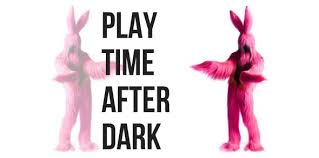As is the case with the list of rules included with more conventional board games, visitors to “Playtime” -- the interactive exhibit currently open at the Peabody Essex Museum through May 6 -- are initially met with a list of ‘givens’ asserted about the art of play, etched out for us in whimsical pink:
“PLAY spurs productivity
PLAY is a catalyst for creativity
PLAY is an escape from conformity I loved this one…
PLAY reinvents the rules
PLAY empowers the players
PLAY stimulates innovation
PLAY enables exploration
PLAY is a response to uncertainty …and this one, especially!
PLAY rewards misbehavior
PLAY negotiates conflict
PLAY resists productivity”
Forty works by 20 leading contemporary artists, the installation contemplates the role of play in the creative process by beckoning visitors to come explore the multiple rooms of the exhibit.
For starters, one entire wall of PEM’s East India Marine Hall is occupied with a found art installation by Italian sculptor, Lara Favaretto. “Coppie Semplici / Simple Couples” -- a gigantic (we’re talking floor-to-ceiling), wildly colorful compilation of rotating car wash brushes -- offers a surprisingly breezy and spirited, yet nearly hypnotic experience.

Sitting on a bench in the historic hall gazing out a window to the city beyond, the rhythmic whir and swish of brushes in the background, was as close to a Zen-like experience as I’ve had in a long time.

Martin Creed’s balloon room installation is precisely what it sounds like -- a room completely filled with inflated pink balloons into which a PEM guide invites people to enter a few at a time, closing the door behind them.

A mild sense of claustrophobia prevented me from experiencing this particular immersive fun -- a decision that others who did participate have since convinced me I should have reconsidered.
"One Minute Sculptures," by internationally acclaimed artist Erwin Wurm, encourage visitors to become part of the exhibit by stepping up onto platforms and striking a pose with various commonplace objects for the amusement or provocation of other visitors passing by.

There’s an interactive piece that looks at sexism through the eyes of the popular video game “Warcraft“ and a film of performance artist Nick Cave as the flaming pink, hairy -- slightly creepy-- “Bunny Boy.”
Much as it is with art, finding joy at play is intrinsically tied to an innate curiosity and comfort with creative risk taking. Exhibition curator, Trevor Smith, calls play “a catalyst for creativity, where we make up the rules and learn how to negotiate and resolve conflict.” And as it is with art, “play helps us possess a power for change. It’s fundamentally about human empowerment,” Smith contends.
Perhaps it’s because names like Stoneham Douglas High School, Sandy Hook Elementary School, Pulse Night Club, and the Emanuel African Methodist Episcopal Church still feel too raw on the tongue, but I found Pedro Reyes’ piece, “Disarm Mechanized ll” by far the most empowering aspect of “Playtime.” Using 6,700 illegal guns confiscated by the Mexican government during raids of drug cartels, the Latino artist created a band of mechanical musical instruments, which can either be automated -- as it is at PEM -- or played live by an individual operator using a laptop computer or MIDI keyboard.

“It’s important to consider that many lives were taken with these weapons; as if a sort of exorcism was taking place, the music expelled the demons they held, as well as being a requiem for the lives lost,” Reyes has said.
Agents of death and destruction transformed into instruments of creativity and vitality -- now that’s my kind of recreation!
“You can discover more about a person in an hour of play than in a year of conversation.”
-- Plato









